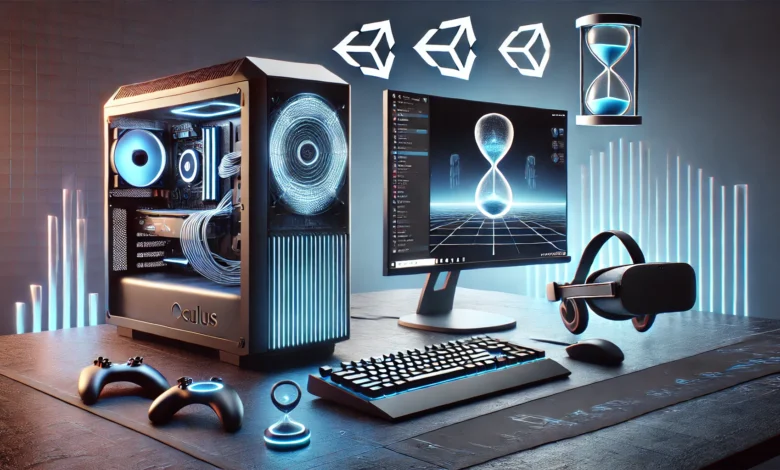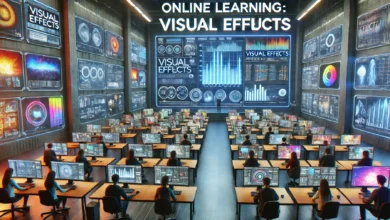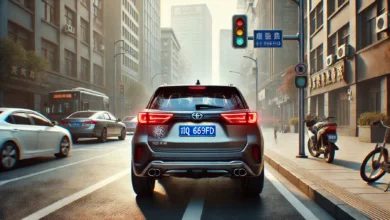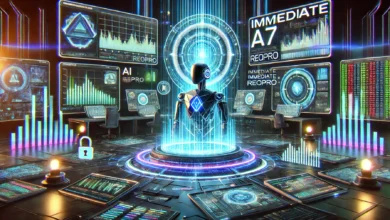Unity 2022.3 Oculus Link Constant Hourglass Windows 11 Fix

Unity 2022.3 Oculus Link Constant Hourglass Windows 11 – If you’re a developer or gamer using Unity 2022.3 to create or experience virtual reality (VR) content with Oculus Link on Windows 11, you may have encountered the frustrating “constant hourglass” issue. This persistent problem interrupts the seamless connection between your Oculus headset and Unity, making it difficult to test or enjoy VR experiences. Fortunately, there are solutions to address this issue and ensure a smooth VR workflow.
In this article, we’ll explore the reasons behind the hourglass issue, offer practical fixes, and provide tips to optimize your setup for Oculus Link on Windows 11. Let’s dive in.
Understanding the Constant Hourglass Issue
The “constant hourglass” problem occurs when your Oculus headset (such as the Meta Quest 2 or Quest Pro) is connected to your PC via Oculus Link, and Unity 2022.3 fails to interact correctly with the headset. Users typically see a loading hourglass in their headset display, which disrupts the intended VR experience.
Common Causes
- Software Incompatibilities: Unity 2022.3 might not integrate smoothly with Oculus’s runtime or Windows 11 due to recent updates or mismatched software versions.
- Graphics Driver Issues: Outdated or improperly configured GPU drivers can cause communication problems between Unity, Oculus Link, and your headset.
- Performance Bottlenecks: Hardware limitations or improper settings can lead to insufficient resources for smooth VR operation.
- USB or Cable Problems: A faulty or low-quality USB cable can result in unstable connections.
- Windows 11 Features: Certain Windows 11 updates or security features may interfere with Oculus software.
Step-by-Step Fixes for the Hourglass Problem
1. Update Oculus Software and Unity
Ensure that you’re using the latest versions of:
- Oculus Desktop App
- Unity Editor (2022.3 or later)
- Oculus XR Plugin for Unity
Steps:
- Open the Oculus Desktop App and check for updates under Settings > General > Software Update.
- Update Unity via the Unity Hub.
- Install or update the Oculus XR Plugin through the Unity Package Manager.
Pro Tip: Regularly check the Oculus Developer Hub for the latest Oculus integration packages compatible with Unity.
2. Install or Update Graphics Drivers
Outdated GPU drivers are a common culprit for VR issues.
Steps:
- Identify your GPU (NVIDIA, AMD, or Intel).
- Visit the official website of your GPU manufacturer.
- Download and install the latest drivers.
For NVIDIA users:
- Use GeForce Experience for automatic updates.
For AMD users:
- Use AMD Software: Adrenalin Edition to check for updates.
3. Adjust Oculus Debug Tool Settings
The Oculus Debug Tool, included with the Oculus software, allows advanced configuration options.
Steps:
- Navigate to Oculus\Support\oculus-diagnostics.
- Open OculusDebugTool.exe.
- Set the following parameters:
- Encode Resolution Width: Lower the value (e.g., 2784 for Quest 2) to reduce bandwidth demands.
- Link Sharpening: Enable or disable this setting based on performance.
- Asynchronous Spacewarp (ASW): Set to “Auto” or “Disabled” based on your experience.
4. Optimize USB Connectivity
A stable USB connection is critical for Oculus Link.
Steps:
- Use a high-quality USB-C cable designed for Oculus Link, preferably the official cable or a certified alternative.
- Plug the cable directly into a USB 3.0 or 3.1 port on your PC.
- Test the connection in the Oculus app via Devices > Quest 2 > Test Cable.
- Avoid using USB hubs or extension adapters.
5. Disable Conflicting Windows Features
Certain Windows 11 settings can interfere with Oculus Link.
Steps:
- Turn off Game Mode:
- Go to Settings > Gaming > Game Mode and toggle it off.
- Disable Hardware-Accelerated GPU Scheduling (HAGS):
- Navigate to Settings > System > Display > Graphics settings.
- Disable HAGS.
- Optimize Power Settings:
- Select “High Performance” under Control Panel > Power Options.
6. Reconfigure Unity Project Settings
Unity settings can impact Oculus integration.
Steps:
- Open your Unity project.
- Navigate to Edit > Project Settings > XR Plug-in Management.
- Enable the Oculus plug-in for both PC and Android platforms.
- Adjust Graphics API:
- Under Player Settings, set the API to Vulkan or OpenGL (based on your platform requirements).
- Ensure proper VR settings under Player Settings > XR Settings:
- Check “Multi-Pass” rendering.
7. Reinstall Oculus Software
A fresh installation can resolve corrupted files.
Steps:
- Uninstall the Oculus software from your PC.
- Download the latest version from the official website.
- Reinstall and reconfigure Oculus Link.
8. Hardware Upgrades (If Necessary)
If you’re still experiencing issues, your hardware may not meet the demands of VR.
Recommendations:
- GPU: NVIDIA RTX 3060 or higher / AMD RX 6600 or higher.
- CPU: Intel i5-11400 or AMD Ryzen 5 3600.
- RAM: 16GB or more.
Frequently Asked Questions (FAQs)
Q1. Why is my Oculus Link stuck on the loading hourglass?
This issue usually occurs due to software mismatches, outdated drivers, or unstable USB connections. Follow the steps outlined in this guide to troubleshoot.
Q2. Can I use a third-party USB cable for Oculus Link?
Yes, but ensure the cable supports high-speed USB 3.0/3.1 data transfer and sufficient power delivery. Always test the connection in the Oculus app.
Q3. Does the Oculus Debug Tool help improve performance?
Yes, the Oculus Debug Tool allows you to tweak settings such as encode resolution and ASW, which can enhance the stability and quality of your VR experience.
Q4. Is Vulkan better than OpenGL for Unity and Oculus?
Vulkan often provides better performance and modern features for VR applications, but compatibility may vary depending on your project and hardware.
Q5. Can Windows 11 updates cause Oculus Link issues?
Yes, certain updates might introduce compatibility issues. Keeping all software and drivers updated minimizes these risks.
Final Thoughts
The “constant hourglass” issue with Unity 2022.3 and Oculus Link on Windows 11 can be frustrating, but with the right steps, you can resolve it and enjoy a seamless VR experience. By updating software, optimizing settings, and ensuring stable hardware connections, you’ll be back to creating and exploring in no time.
If problems persist, consider reaching out to Unity or Oculus support for further assistance. VR technology is constantly evolving, and staying informed about updates and best practices will keep your workflow smooth.
You may also read.
Unity 2022.3 Oculus Link Constant Hourglass Windows 11 Fix




